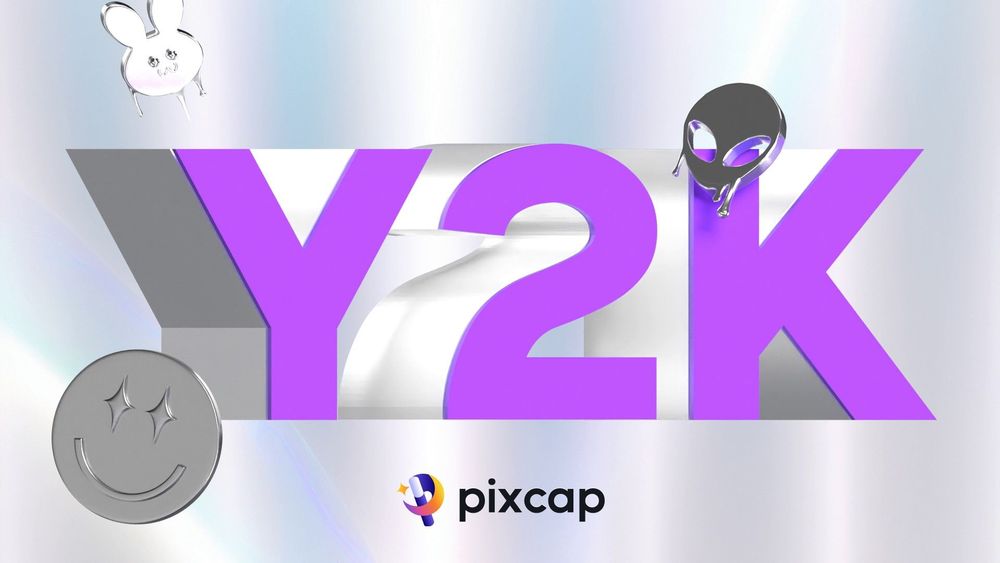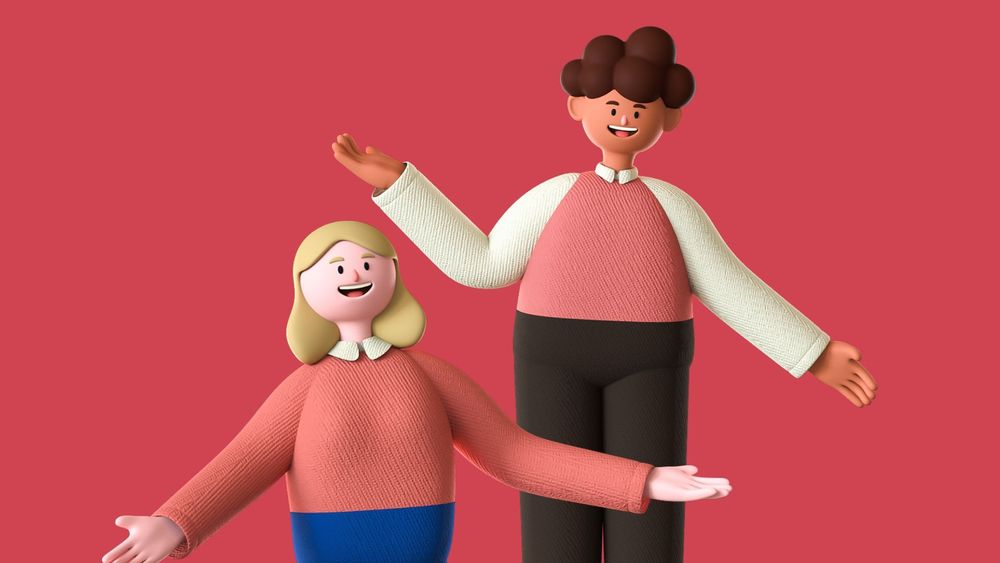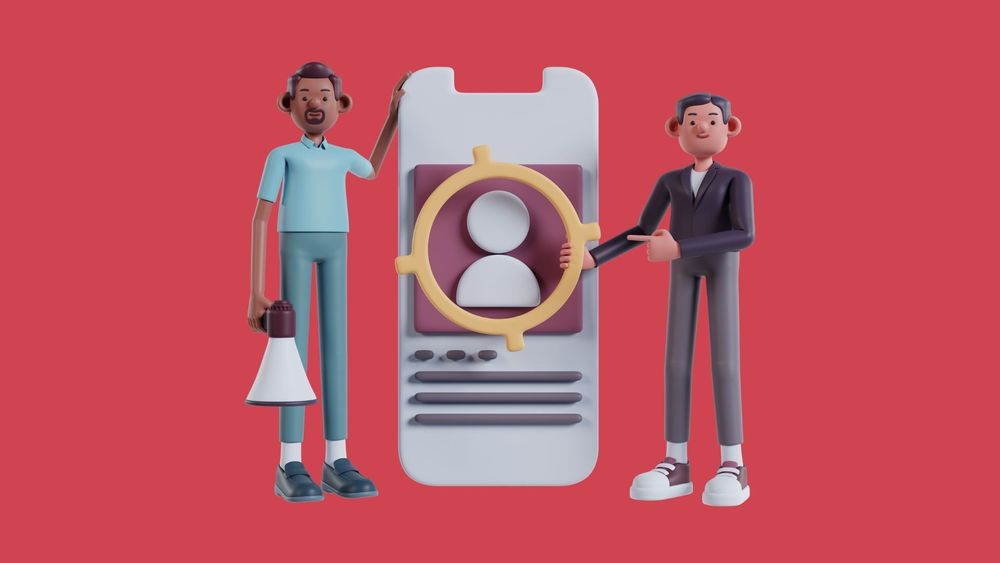Embracing the Y2K aesthetic has become increasingly popular, and a trend amongst millennials and Gen Z. This retro graphic design style, inspired by the bold and vibrant visuals of the late 1990s and early 2000s, has found its way into various creative industries, including 3D modeling. Incorporating Y2K graphic design into your 3D models can add a unique and nostalgic touch to your creations. Whether you are a professional 3D designer, a beginner graphic designer, a business looking to enhance your marketing materials, or an educator seeking to create immersive learning experiences, this article will guide you on how to infuse the Y2K design aesthetic into your 3D designs. From using vibrant colors and geometric shapes to mastering the art of pixelated textures, we will explore various techniques and tools to help you achieve the desired retro look. Get ready to dive into the world of Y2K graphic design and discover how it can elevate your 3D models to new levels of creativity.
Understanding Y2K Graphic Design
The Emergence and Popularity of Y2K Aesthetic
The Y2K aesthetic emerged from the cultural and technological milieu of the late 90s and early 2000s. A time of optimism about technology's potential, the period was marked by a fascination with digital and cyber-inspired themes. The aesthetic itself is characterized by bright, often metallic colors, bold typography, shiny textures, and an overall futuristic look that mirrors the era's excitement for the new millennium. The revival of Y2K in graphic design is partly fueled by nostalgia and also influenced by a renewed interest in retro-futurism. Now, Y2K is one of biggest graphic design trends as designers are drawing inspiration from this time, recognizing the potential of Y2K visuals to stand out in a saturated market. The style's resurgence is not just a passing trend but a reflection of the cyclical nature of design aesthetics and their ability to resonate with contemporary audiences.

Key Characteristics of Y2K Design
Y2K graphic design is distinguishable by several defining features. Firstly, it often includes a bright and bold color palette focusing mainly on neon colors, such as lime green, hot pink, bright blue and more, with an emphasis on metallics, and chrome effects that reflect the era's fascination with technology and the future. Geometric shapes and angular lines are frequent, creating a sense of movement and dynamism. This style also embraces a playful approach to typography; think bubble letters or heavily stylized block and futuristic fonts that embrace the essence of the late '90s tech boom. Textures play a significant role as well, with pixelation and glitch effects that nod to the digital nature of the time.
Lastly, there's a noticeable blend of organic and digital elements, like the incorporation of futuristic motifs with natural forms, which serves to highlight the tension and excitement of an era on the brink of a new millennium. These characteristics combine to create a retro-futuristic feel that is both nostalgic and innovative.
To sum it, Y2K is the exact opposite of the minimalistic graphic design trend that we are also seeing in today's visual design culture.

The Convergence of Y2K Design and 3D Models
Integrating Y2K Elements into 3D Modeling
Merging Y2K graphic design with 3D modeling involves more than just applying a color scheme or texture; it's about capturing the spirit of an era. To infuse your 3D models with the Y2K aesthetic, start by studying iconic elements from that time. Incorporate iridescent materials and reflective surfaces that mimic the metallic and glossy finishes popular back then. Utilize shapes and silhouettes that echo the organic yet digitized forms characteristic of the period. When it comes to typography, embed stylized fonts into your models to convey the playful and experimental nature of Y2K graphic design trends. Additionally, play with lighting to create high-contrast scenes reminiscent of the dramatic and bold visuals from early digital art. By thoughtfully combining these elements, your 3D models can embody the Y2K aesthetic, bringing a touch of retro-futurism to modern digital design.
Case Studies: Y2K Inspired 3D Art
The Y2K aesthetic's comeback can be seen through a number of case studies where 3D artists have harnessed its distinct style to create impactful art. One such example is a series of 3D models that blend neon lighting with cybernetic textures, achieving a look that's both modern and nostalgically futuristic. Another case study involves a 3D animation project that revives the bulky, yet sleek tech gadgets of the era, such us desktop computers, and its nostalgic UI, reimagined through today's lens. These models showcase the iconic glossy plastics and metallic accents that were prevalent in early 2000s product design. Additionally, some projects have focused on recreating famous Y2K-era music videos, and 90s pop culture by using 3D models to capture the era's unique fusion of CGI and live-action, complete with the period's signature chromatic aberrations and lens flares. These case studies not only celebrate the distinctive style of the time but also demonstrate how old design elements can be refreshed for contemporary audiences.
Practical Steps for Incorporating Retro Graphic Design
Understanding Tool Capabilities and Limitations
When incorporating Y2K graphic design elements into 3D models, it's crucial to understand the capabilities and limitations of the tools at your disposal. 3D modeling software comes with a broad range of functionalities, each varying in terms of texture handling, rendering options, and lighting effects. Familiarize yourself with your software's features, especially those that allow for the manipulation of reflective surfaces and lighting, which are essential for recreating the Y2K look. A good way to start is to start using Pixcap, as it allows you really blend Y2K with 3D with several Y2K templates and elements. Be aware of resolution limitations when working with images with pixelated textures to ensure they maintain their retro quality without appearing unintentionally low-quality - by using Pixcap's best quality download feature you will avoid facing this issue. Using Pixcap will enable you to effectively translate the Y2K aesthetic into your 3D designs without any prior experience in 3D.
Guidelines for Treating Textures and Light
Textures and lighting are pivotal in capturing the Y2K aesthetic within your 3D designs. When working with textures, aim for high contrasts and saturated colors that were prevalent in the era's graphic design. Experiment with metallic and shimmering surfaces to reflect the futuristic vibe of the period. . For a truly retro feel, incorporate pixelated or glitchy textures that remind viewers of early digital art and technology.
Lighting, on the other hand, is all about creating drama and emphasis. Use bold and direct lighting to mimic the stark contrasts and vivid highlights of the time. Colored lights, especially those in neon hues and blue, can also help underscore the Y2K atmosphere. Remember to balance the light and shadow to ensure that your textures are visible and contribute to the overall aesthetic. Properly treating textures and light can transform your 3D models into a nostalgic journey back to the dawn of the new millennium.
Implications for Different Sectors
Y2K 3D Models in Advertising and Marketing
Y2K 3D models hold significant potential for the advertising and marketing sector. By leveraging the nostalgic appeal of the Y2K graphic design trend, brands can create strong emotional connections with audiences who have lived through the era. These retro designs can also intrigue younger demographics who resonate with the aesthetic's bold and distinctive look.
In advertising and fashion now, Y2K-themed 3D models can serve as eye-catching visuals in campaigns, setting a brand apart from competitors using more conventional modern designs. They can be used in social media content, digital ads, or even as part of interactive experiences that engage consumers in a novel way.
For marketing purposes, Y2K 3D models can be instrumental in product launches or rebranding efforts that aim to evoke a sense of innovation and coolness associated with the turn of the millennium. When done right, this approach to branding can not only grab attention but also foster brand recognition and loyalty.
Enhancing Learning Experiences with Y2K 3D Models
In the educational sector, Y2K 3D models can be highly effective in enhancing learning experiences by providing a visually stimulating environment that captures students' attention. For subjects that delve into recent history or cultural studies, these models can serve as engaging, interactive artifacts that help students visualize and understand the context and culture of the Y2K era.
Moreover, the distinctive features of the Y2K aesthetic — such as its vivid colors, dynamic shapes, and bold textures — can be leveraged to create memorable educational content. They can be used to illustrate concepts in design and technology courses or to add a layer of engagement in virtual learning environments.
The playful and imaginative qualities of Y2K graphic design also offer opportunities for gamified learning experiences. By incorporating these elements into 3D models used in educational games or simulations, educators can create immersive scenarios that are both educational and entertaining, thus enhancing the overall learning experience.
Succeeding with Pixcap's Resources
Exploring Pixcap's Tools for Y2K 3D Design
Pixcap offers a suite of tools that are particularly well-suited for creating Y2K-inspired 3D designs. These tools are designed to be user-friendly, allowing both novice and professional designers to navigate the intricacies of 3D modeling with ease. With Pixcap, you can access a library of pre-designed textures and materials that resonate with the Y2K aesthetic, from shiny metallics to luminous neons. Try Pixcap's extensive material library that allows you play around with metallic textures that fit the aesthetic in minutes.
In addition to that, Pixcap has a wide variety of Y2K templates that allow you to start designing without prior knowledge in 3D graphic design. Some examples of the Pixcap templates, that blend the retro and futuristic looks, that you can start using immediately are:
Y2K fashion poster with inflatable text and holographic background

Y2K walking on air quote template with 3D character

The platform also provides powerful rendering capabilities that can bring your Y2K designs and graphics to life with the right balance of light and shadow, vital for capturing the era's dramatic flair.
Taking Advantage of Pixcap's AI-Enhanced Modeling for Y2K Trend
Pixcap's AI-enhanced modeling capabilities set it apart as an invaluable tool for creating Y2K retro designs. The AI Stylist assists in streamlining the modeling process, allowing for quicker creation and iteration of complex shapes and textures that are characteristic of the Y2K aesthetic. It can intelligently design elements based on trends in the Y2K style, such as adding textures or lighting setups that correspond with the retro theme.
The AI features in Pixcap also help in optimizing the image rendering process, ensuring that your models not only look good but are also efficient in terms of resource usage. This means you can achieve that high-gloss, futuristic finish without the burden of extended rendering times.
Reviving Y2K: Breathing Retro Life into 3D Design
In conclusion, the resurgence of Y2K graphic design presents an exciting opportunity for creative professionals across various industries, including 3D modeling. By embracing the bold colors, playful typography, and futuristic motifs characteristic of the era, designers can infuse their 3D models with a unique nostalgic charm. Leveraging tools like Pixcap, with its extensive library of Y2K-inspired materials and AI-enhanced modeling capabilities, streamlines the process and empowers designers of all skill levels to dive into this retro-futuristic aesthetic with confidence. Whether it's in advertising and marketing campaigns or enhancing educational experiences, Y2K-inspired 3D models offer a visually captivating way to engage audiences and evoke a sense of nostalgia while embracing innovation. So, dive into the world of Y2K design, and let your creativity take flight as you transport your 3D models back to the dawn of the new millennium.




